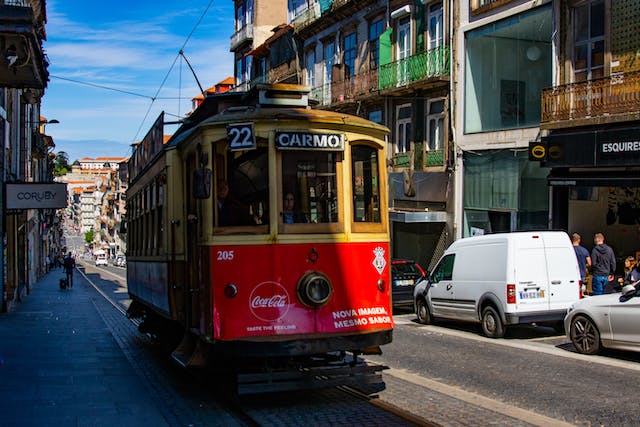
Despite the obstacles of being a minority community, the Deaf people in Portugal have raised awareness for their recognition. One such place for exposure is through the media. Recently, it has played a pivotal role in providing a platform for their voices. In this post, we’ll look more closely at the relationship between the Deaf community and media in Portugal.
The Portuguese Deaf Community
Around 150,000 Deaf people are living in cities like Porto and Lisbon. There are two prominent organizations representing the Deaf community in Portugal. The European Union of the Deaf and The Federação Portuguesa das Associações de Surdos.
Federação Portuguesa das Associações de Surdos supports Deaf employment, education, healthcare, and more. They are constantly evaluating their internal structure to fill the needs of Deaf people. The organization strives to be at the forefront of defending the Portuguese Deaf community. They believe in promoting uniting the Deaf community through their linguistic and cultural uniqueness.
Meanwhile, The European Union of the Deaf supports interpretation services for events and announcements made on TV, in addition to defending the rights of Deaf people based on the Federation of the Portuguese Associations of Deaf People and the Ministry of Justice.
The Recognition of Sign Language
During the Middle Ages, Deaf people were perceived as possessed by the Devil. The stigma continued for years until a more progressive Swede came to Lisbon and developed Portuguese Sign Language (LGP, Lingua Gestual Portuguese). LGP morphed into the Sign Language the Portuguese Deaf community uses today.
In 1997, the Portuguese government recognized LGP as an official language in the Constitution. It was a significant milestone towards acknowledging the Deaf community. In addition, the Portuguese government also invested in training and providing interpreters in public spaces. These strategic efforts forged a path for LGP and the Deaf community in society. Most of all, language recognition acts as a means to defend Deaf culture and the rights of Deaf people. It further promotes the richness of the language and resilient community. As awareness has grown over the past 20 years, it strives towards a more equitable society.
Crisalida: The Journey of the Deaf in Movies
Photo by Pixabay
We often grow up living vicariously through what we see on TV and in movies. Children use media to envision who they want to be or fantasize. Even adults can get inspired by a movie or TV show character. For the most part, minority communities seldom have representation, but Deaf awareness in Portugal is giving them representation in some facets of media.
One example of Deaf people in entertainment is a Portuguese short film, Crisalida, which translates as “Chrysalis” in English. The story is about self-growth and transformation, which is scary for even the most confident people. The movie focuses on the urban mobility issues of the Deaf community. It follows the protagonist as he faces numerous difficulties navigating school and life as a Deaf person. His teachers and peers eventually realize the challenges that he has but also see the progress he makes over time.
The main message behind this movie is the importance of representation for the Deaf community. It highlights the importance of learning LGP and how it can weave together the community. The most touching aspect was the mother’s approach to her child’s deafness. Rather than trying to fix or hide him from society, she encouraged him to adapt to society despite his differences.
The media landscape in Portugal is as varied as in many other places, including multiple TV networks, radio stations, and social media platforms. The media connects us to the world and enables us to learn about different things, stay updated with the latest news, and meet new people in our community. This is why accessible media is crucial for the Deaf community. How do Portugal and affiliated deaf organizations ensure that Deaf people have access to the media?
It’s important to understand these challenges that the Deaf community faces in Portugal and the role that the media can play. All media outlets should consider how inclusive they are and the extent of their reach. By looking at this relationship more closely, we can shed light on the issues that the Deaf community in Portugal faces and work towards creating a more inclusive society.
Mediane Organization for Inclusive Radio and TV Broadcasting
Photo by Nothing Ahead
It’s a challenge to make media inclusive to Deaf people. No one is saying it isn’t. Accessibility of something is entirely hearing-based. However, organizations are seeking to change this. In Portugal, there is an initiative made by Mediane, a joint organization with the Council of Europe, to adapt radio for Deaf people. Ultimately, technology plays a massive role in modern times, which means the connection between radio and the internet should be adaptable for the Deaf. RTP is a smaller organization that is working with Mediane. They do Teletext subtitling for popular TV programs that are in Portuguese. A symbol shows on the TV when they switch to Deaf-friendly programming.
Social Media Platforms
Social media platforms, such as YouTube, have become increasingly inclusive for the Deaf community in Portugal. This is due to the availability of video content and visual storytelling that includes subtitles or sign language interpretation. Additionally, social media is being used to connect members of the Deaf community. With continued efforts towards inclusion, social media can be a powerful tool in empowering the Deaf community in Portugal.
The media plays a role in our lives, and it should be accessible to all. Portugal has been at the forefront of making TV, social media, radio, and other media outlets accessible to the Deaf. The government prioritizes access through the European Union of the Deaf, and these efforts will have a positive impact on the Portuguese Deaf Community for generations to come.
Discover the worldwide representation of the Deaf community by visiting https://www.unspokenasl.com/
Photo Credit to: Photo by Magda Ehlers

